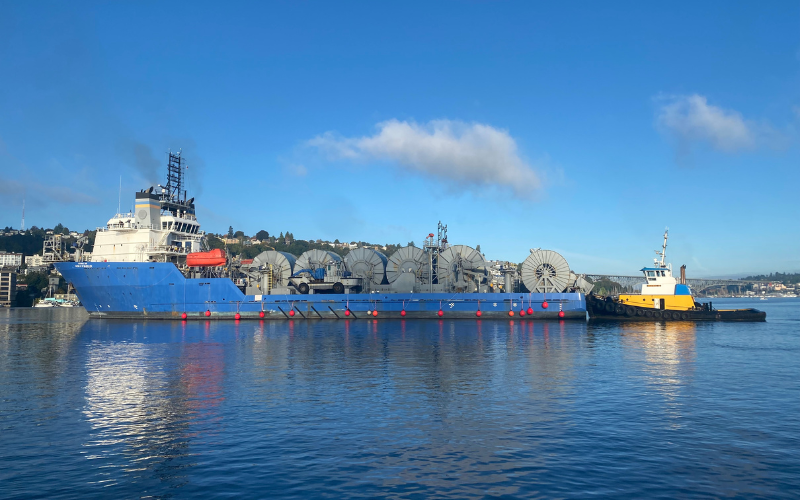Many professional mariners work extended hours while underway. While a typical workday may involve a set period of watchkeeping, plus additional duties, eligibility for time-and-a-half sea service credit is specifically regulated by the Coast Guard. Time-and-a-half sea service credit can effectively accelerate your career progression, but only under approved circumstances.
To qualify for time-and-a-half credit, your vessel's operations must comply with 46 U.S.C. § 8104 and 46 CFR § 15.705. Time-and-a-half credit only applies to vessels operating on a six-on, six-off schedule or equivalent watch system authorized by the Coast Guard. The basic definition of a "day" for sea service credit, as stated in 46 CFR § 10.107(b), is eight hours of watchstanding or day-working, excluding overtime. The regulations state that Time-and-a-half credit only applies to vessels operating on a six-on, six-off watch system authorized by 46 USC 8104 and 46 CFR 15.705. The vessel must fall into one of the categories listed in regulation.
Vessels that may be eligible for time-and-a-half credit, depending on specific operational parameters and authorization, include:
Towing Vessels: Towing vessels may operate on a two-watch system, subject to authorization based on manning requirements determined by the Officer in Charge, Marine Inspection (OCMI) for the vessel's area of operation.
Offshore Supply Vessels (OSVs): OSVs of a certain tonnage operating within specific geographic limits, provided they also comply with applicable work-rest requirements as outlined in Coast Guard regulations. Specific tonnage requirements and geographic limits are defined in the regulations.
Fish Processing Vessels: Eligibility varies based on vessel size and the number of crew involved in processing activities. Specific size and crew number requirements are defined in the regulations.
Cadets: Cadets sailing on Maritime Administration Training Ships (eligibility under separate regulatory authority).
A clearly written Sea Service Letter on company letterhead, signed by an authorized official, is essential for claiming time-and-a-half credit. This document is the primary evidence you'll submit to the Coast Guard to verify your sea service.
It is critical that your employer accurately reflects the actual days you worked on their vessels in the Sea Service Letter. Do not divide the total hours worked in a period by eight or 12. The Sea Service Letter should clearly specify the number of days worked as a whole number. No sea service letter should ever have .5 on it as a mariner needs to work at least eight hrs in a day for a sea day and 12 hours in a day for 1.5 sea days credit on approved vessels. The .5 either means four hours or six hours which is not a sea day and indicates that a company is not counting every day the person worked but instead dividing the number of hours a mariner worked in a period by eight or 12 which is not allowed.
If you are working on a vessel with three watches or on a day boat over eight hours each day the letter must clearly state:
“The listed sea service consists of eight hour days.”
If a mariner is working on a vessel that is authorized for a two-watch system by the Coast Guard and the mariner is standing watches as either six-on/six-off or equivalent, the letter must clearly state:
“The listed sea service consists of a two-watch system for a 12-hour working day. By documenting 12-hour day service, I am attesting that a two-watch system has been authorized by the United States Coast Guard, per each vessel’s manning requirements in accordance with 46 CFR 15.705.”
Sea Service Letters should instead report actual days served (e.g., eight-hour days) and separately state eligibility for enhanced credit stating a two-watch system is authorized and practiced to avoid confusion and double-counting.
If the vessel you are working on is not on the Coast Guards authorized vessel type list by statue but the Certificate of Inspection (COI) for the vessel you are working on clearly indicates that a two watch system is authorized by the Coast Guard Office In Charge of Marine Inspection (OCMI) for your area you are not required to include a picture of the COI for the vessel as part of your Merchant Mariner Credential Application package when you submit it to the National Maritime Center but you may include it to help in verifying vessel eligibility for a two-watch system.
Seeking employment on vessels where time-and-a-half credit may be authorized can significantly accelerate your career progression. However, with increased scrutiny by the Coast Guard’s National Maritime Center to combat sea service fraud and abuse, it's imperative that you and your company meticulously ensure the accuracy of all claims. Submitting false or inflated sea service documentation can lead to serious consequences, including delays in processing your application, denial of your application, or even revocation of your license.




